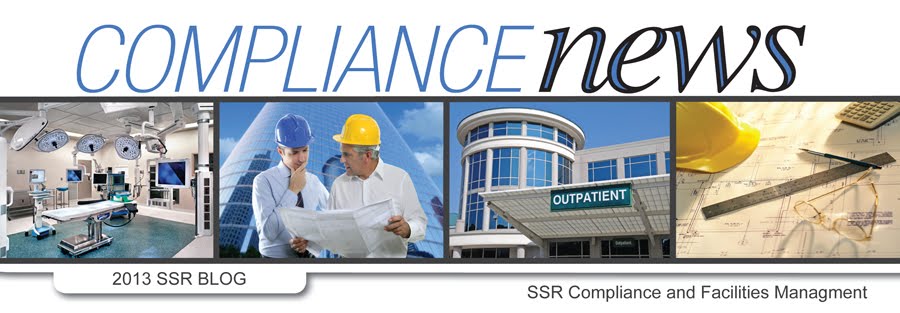In the September 2013 update to the 2013 Survey Activity Guide, The Joint Commission (TJC) added the following environment of care documents to its list of documents required at the beginning of a hospital survey.
28. Written fire response plan
29. Interim Life Safety Measure policy
30. Fire drill evaluations
Wednesday, November 13, 2013
Tuesday, November 12, 2013
TJC Notification Requirements for CMS Categorical Waivers
The Joint Commission (TJC) recently clarified its notification requirements if an organization decides to take advantage of any CMS categorical waivers. If a categorical waiver relates to a Life Safety Code requirement, TJC has requested that the organization identify that decision in the Additional Comments field of the eBBI section of the eSOC at TJC’s eConnect website for that organization. On the other hand, if a categorical waiver relates to another chapter requirement, such as the motor-driven fire pump testing requirement within EC chapter Standard EC.02.03.05, TJC asks that the organization document its decision in the Safety Committee or EOC Committee meeting minutes. This is a change from information previously disseminated by ASHE shortly after the waivers were released by CMS.
The organization should also notify the TJC surveyors at the beginning of the survey of any waivers that the organization has elected to use.
The organization should also notify the TJC surveyors at the beginning of the survey of any waivers that the organization has elected to use.
Monday, November 11, 2013
TJC Emphasizes Pressure Relationships for Infection Prevention
By David Stymiest, PE, CHFM, CHSP, FASHE
In his October 25th ASHE-sponsored webinar, TJC Director of Engineering George Mills emphasized the importance of maintaining proper pressure relationships for infection prevention where rooms are required to be positive or negative with respect to adjacent rooms or spaces. Mr. Mills reiterated previous statements regarding how TJC surveyors will test for required pressure relationships – surveyors will use the tissue test very early to assess the adequacy of pressure relationships at the doorways of rooms subject to those requirements. The tissue test is often performed by holding a thin tissue at the bottom door gap of a closed door. The tissue will typically bend or flutter in the direction of air flow, which will be from a more positive to a less positive (or from a less negative to a more negative) space. As a rule of thumb, the “more clean” areas need to be positive pressure with respect to the “less clean” areas. If the tissue flutters from the “more clean” areas to the “less clean” areas – no problem. If the tissue flutters in the opposite direction however – big problem. This is likely to result in a Requirement for Improvement (RFI) against Standard EC.02.05.01, Element of Performance (EP) #6, which states the requirements for areas designed to control airborne contaminants along with the concomitant need for appropriate pressure relationships, air-exchange rates, and filtration efficiencies.
In his October 25th ASHE-sponsored webinar, TJC Director of Engineering George Mills emphasized the importance of maintaining proper pressure relationships for infection prevention where rooms are required to be positive or negative with respect to adjacent rooms or spaces. Mr. Mills reiterated previous statements regarding how TJC surveyors will test for required pressure relationships – surveyors will use the tissue test very early to assess the adequacy of pressure relationships at the doorways of rooms subject to those requirements. The tissue test is often performed by holding a thin tissue at the bottom door gap of a closed door. The tissue will typically bend or flutter in the direction of air flow, which will be from a more positive to a less positive (or from a less negative to a more negative) space. As a rule of thumb, the “more clean” areas need to be positive pressure with respect to the “less clean” areas. If the tissue flutters from the “more clean” areas to the “less clean” areas – no problem. If the tissue flutters in the opposite direction however – big problem. This is likely to result in a Requirement for Improvement (RFI) against Standard EC.02.05.01, Element of Performance (EP) #6, which states the requirements for areas designed to control airborne contaminants along with the concomitant need for appropriate pressure relationships, air-exchange rates, and filtration efficiencies.
Subscribe to:
Posts (Atom)

